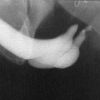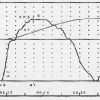Anatomy |
The urethra is a tubular structure that serves to bring to the exterior the urine contained in the bladder and seminal fluid from the prostate gland and seminal vescicles, which contains spermatozoa. The urethra originates in the bladder, at the inferior and anterior level, called bladder neck. After crossing the pelvic floor and the perineum, it runs along the entire length of the penis, ending at the apex of the gland. The length of the male urethra varies according to age and from person to person. In adult men, the length of the urethra, about 16-18 cm, varies also according to penile length. More….. |
|
|
|

Etiology |
The male urethra is a tubular structure about 18 cm in length, and it may present an occlusion or reduction of his caliber that is called urethral stricture. Male urethral stricture may be due to congenital abnormality or acquired diseases. More….. |
|
|
|

Symptoms |
Patient with urethral stricture generally complain of voiding symptoms, which are experienced during the voiding phase. They consist in the following:
More….. |
|
|
|

Diagnosis |
Diagnosis of urethral strictures requires a careful evaluation of the patient’s clinical history, a physical examination of the patient, as well as various clinical investigations.
More….. |
|
|
|

Therapy |
Treatment of urethral strictures is primarily surgery, but the choice of the appropriate treatment is based on the characteristics of the stenosis (site, etiology, length, adverse local factors) and on the patient’s characteristics (age, clinical history, associated diseases, physical and mental condition).
More….. |

CENTER FOR RECONSTRUCTIVE URETHRAL SURGERY